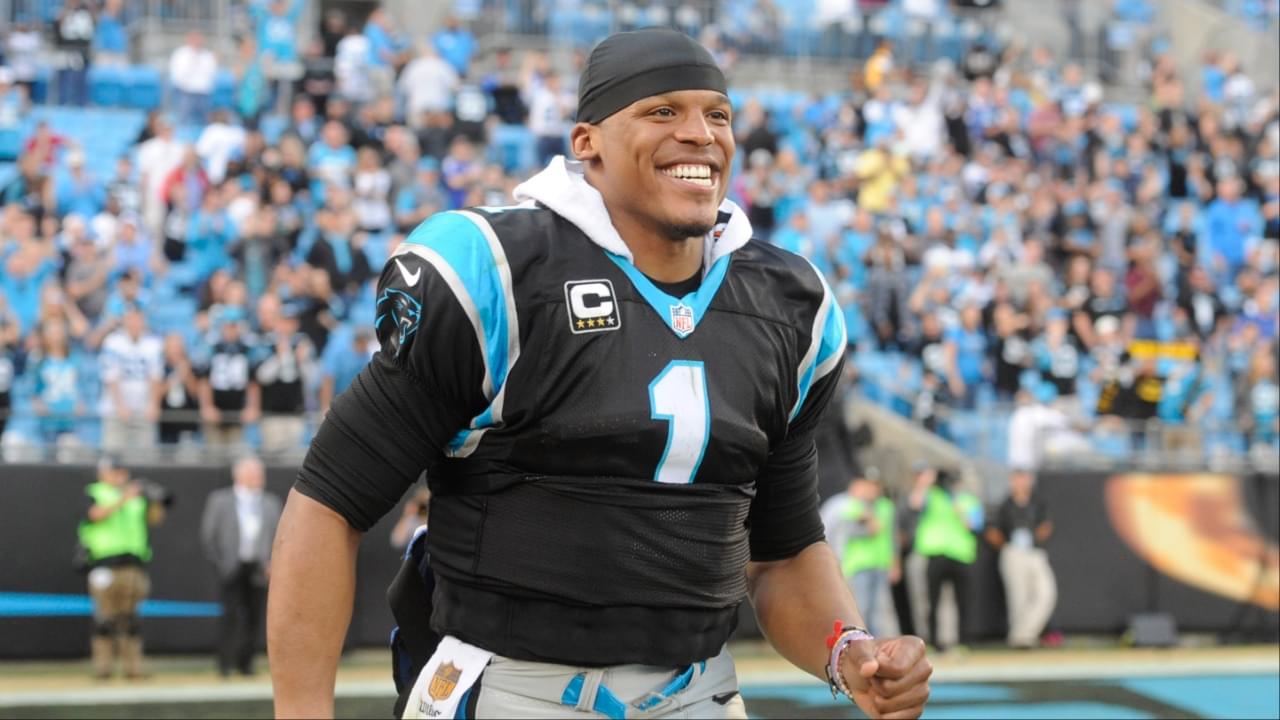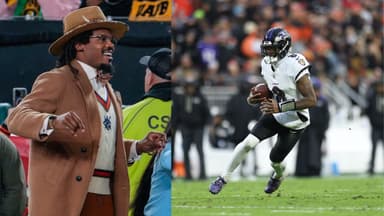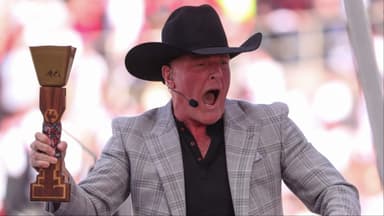Sports fans today have unprecedented access to the inner workings of their favorite teams. The 24/7 news cycle has allowed fans to see into the world of professional athletes, like NFL players, more than ever before. But there’s still one final bastion of privacy for athletes: the halftime locker room.
Advertisement
The locker room itself is not generally a haven, as reporters have long been allowed in after games to interview players. Even post-game locker room speeches from coaches are often filmed and shared online. But halftime remains off-limits.
Naturally, this begs the question: what’s going on in there? Cam Newton, the 2015 NFL MVP who spent 11 years in the NFL, was asked just that question on his 4th and 1 podcast this week.
According to Newton, NFL teams will often have orange slices ready for the players as they come in, just like back in Pop Warner.
Newton also said that he personally liked to have two peanut butter and jelly sandwiches during the break, and that he would also mix what he calls “Cammy-Cam juice,” his “concoction of hydration.” He added that halftime is a “whirlwind” because of how many people are all in the locker room at once.
“You have trainers, medical staff, players that’s in there, you have coaches that’s in there, they’re trying to make their adjustments. Typically, you have anywhere from 15-20 minutes,” Newton explained.
“The coaches come down, they meet isolated from the players for about 3-5 minutes. So that’s the time where you gotta get re-hydrated. You wanna change your jersey, change your cleats, change your gloves, go see the medical staff for something real quick,” he added.
Once everyone has their bodies and uniforms in order for the second half, the coaches re-emerge from their private meeting and split the team into offense and defense. Then, they go over what went right and wrong in the first 30 minutes and how they plan to fix it in the final 30 minutes.
“Those adjustments offensively for us would be, ‘Hey, we’ve had success with X, Y, Z. We’re gonna think about coming back after halftime with these types of plays’ … He’ll make personnel adjustments. … And defensively they do the same thing,” Newton continued.
“So, halftime, it could make anybody’s brain pop, because it could be brain overload, and then all of a sudden (claps): ‘Hey we good, we good! Offense on three offense on me, 1-2-3 Offense!’ And then it’s time to go back out there.”
https://t.co/BeSqDC215W pic.twitter.com/cZ2ip39jTf
— 4th&1 with Cam Newton (@4thand1show) October 29, 2025
However, while Newton clearly experienced a lot of hectic halftimes, other QBs had a different experience. Hall of Famer Peyton Manning and his brother, Eli, said that halftime adjustments were “the biggest myth in football.”
As they explain it, once you walk all the way to the locker room, you’ve only got 3-5 minutes before you have to head back out to the field for the second half. “There’s no time,” Peyton said emphatically on the MNF Manningcast back in January 2023.
“I don’t know if I ever made a halftime adjustment in my entire 18-year career. I think that’s the biggest myth in football- the halftime adjustments. You go in, you use the restroom, you eat a couple of oranges, and then the head coach says, ‘Alright, let’s go!'”
"I don't know if I ever made a halftime adjustment in my entire 18-year career. I think that's the biggest myth in football- the halftime adjustments. You go in, you use the restroom, you eat a couple of oranges, and then the head coach says, 'Alright, let's go!'"- Peyton Manning pic.twitter.com/j17FWpXChq
— Awful Announcing (@awfulannouncing) January 17, 2023
Both Newton and the Mannings could be right. Different teams and different players likely have different halftime routines. But clearly, there is always one halftime constant that doesn’t change from peewee ball all the way up to the pros: good ol’ orange slices. Thanks, Ma!








